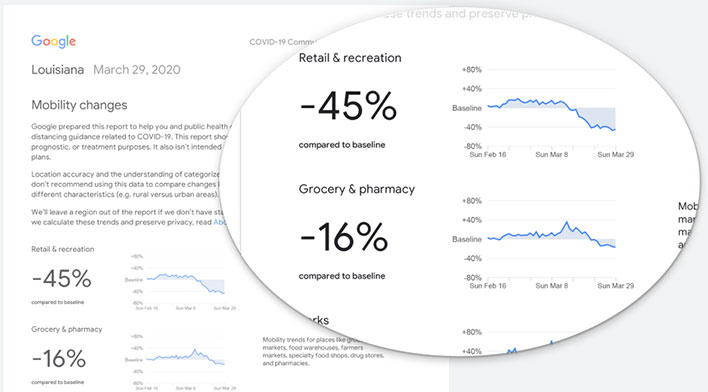Google Uses Your Location Data To Show How COVID-19 Has Disrupted Our Daily Lives
Data collection tends to make people squeamish, because quite frankly, technology firms have a spotty track record when it comes to respecting privacy. That includes Google. Be that as it may, it is a practice that will continue to exist in the online era, though it does not necessarily have to be used solely for targeted advertising. How so? Google has begun publishing COVID-19 Community Mobility Reports based on collected data, to help health officials formulate effective strategies against the spread of the virus.
As outlined in a blog post, the reports use aggregated, anonymized data to chart movement trends over time by geography. The reports take into account different high-level categories of places, such as retail and recreation, groceries and pharmacies, parks, transit stations (presumably bus and train stations), workplaces, and residential locations.
Google also ensures that these reports will never contain any personally identifiable information.
"We’ll show trends over several weeks, with the most recent information representing 48-to-72 hours prior. While we display a percentage point increase or decrease in visits, we do not share the absolute number of visits. To protect people’s privacy, no personally identifiable information, like an individual’s location, contacts or movement, is made available at any point," Google explains.
Google is releasing these reports around the world. Collectively, they cover 131 countries and regions. In addition, Google say it is providing insights at the regional level, and will add more countries and regions to the mix over the coming weeks.
"We hope these reports will help support decisions about how to manage the COVID-19 pandemic. For example, this information could help officials understand changes in essential trips that can shape recommendations on business hours or inform delivery service offerings," Google says.
Some people might feel Google is walking a fine line with this type of thing, and that is understandable. The data in the reports relies on a differential privacy methodology, from users who have enabled the Location History setting (this is disabled by default). You can read more about this by hitting the link in the Via field below.



